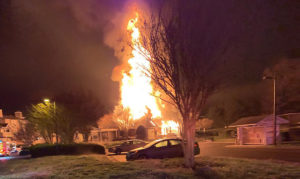 After a disaster in your home, there will be many things going through your mind. If part of your home is destroyed in a fire, your first thought is likely, “How will we get this repaired?” and alongside that, you might be trying to see what can be salvaged.
After a disaster in your home, there will be many things going through your mind. If part of your home is destroyed in a fire, your first thought is likely, “How will we get this repaired?” and alongside that, you might be trying to see what can be salvaged.
After that, and when the restoration is underway, some other things need your attention. Once the professionals have done their bit — and told you it’s safe — you can go back into your home and start to work on the other things that the fire has affected.
Read on to get a list of four important things to check when clearing up your home post-fire.
1. Smoke Smell
There are plenty of guides out there that will teach you how to get smoke smell out of the house after a fire,but here is a quick list of things to get started.
- Step one will always be to get the windows open and some fans going. You need to air out the house with as much fresh air as possible, which will start to remove the smell.
- Then, you can start to clean the surfaces that the smoke smell is clinging to. Wash fabrics, air chairs and sofas outside if possible, and wipe down tables. It will hopefully get through the majority of the smell. You may have to clean things a few times with strong detergents, but it’ll be worth it in the end.
You may not be able to salvage everything, so as a last resort, replacing items might be the thing to do. Alternatively, contact a professional restoration service to see if they can help.
2. Soot Stains
Removing soot can either be very easy or quite tricky, depending on the surface you are trying to clean.
- If it is a machine-washable fabric or upholstery covers, machine-wash them to get out both the smell and the soot stains.
- For carpets, there are a couple of home remedies that you can use and cleaners you can purchase in stores. If you purchase something strong, ensure you follow directions correctly to prevent more damage.
- It is possible to get soot stains off of things like wood and solid surfaces too, but it’s likely better to replace such things just in case there is hidden damage. If you want to try and salvage the wood, you can use shop-bought cleaners, or for more natural remedies you can use wood-friendly oils.
3. Structural Damage
What you see isn’t always what you get. Fire damage can seep through floorboards and get into the foundations of your home. It can also sneak into the rafters. Once you have checked all the obvious places, check behind furniture, check crawl spaces and attics, and anywhere that soot and fire damage might be hidden.
If you find some serious damage, call in a professional to get potential structural damage fixed as soon as possible for your and your family’s safety.
4. Water Damage
Another thing to check for is post-fire water damage from the hoses used to put out the blaze. There will be obvious damp patches and some more sneaky ones — thoroughly inspect all your upholstery and carpets. Unattended water damage can cause structural issues and mold, so it’s best again to call in the experts.
To Conclude
You can never truly prepare yourself for a fire, but you can give your home the best chance of recovery by inspecting it inch by inch for necessary repairs. You want to save yourself future trouble by getting all issues solved as soon as you possibly can.
